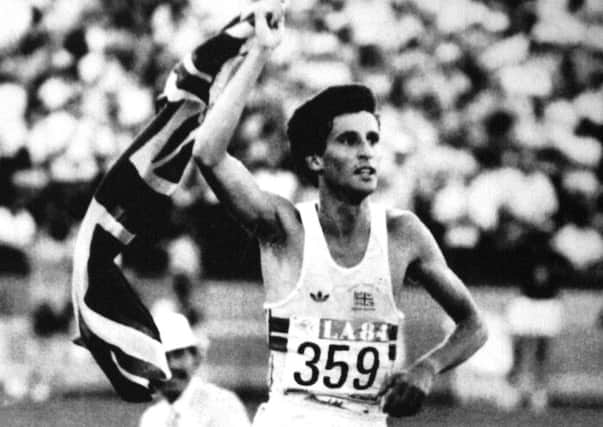Coe races to Olympic glory: The week that was August 8 to 15, 1984.


Galvin evaded capture, and later Gerry Adams, leader of the IRA’s political wing Sinn Fein, denied that his organisation had stage-managed the incident. The Northern Ireland Office defended the RUC and blamed Sinn Fein for the death and injuries.
Meanwhile, Belfast shipbuilder Harland and Wolff won a £110m contract to build a revolutionary ship to tap the resources of small oilfields in the North Sea. The order would help to safeguard the jobs of the 5,500 workers at the yard.
Advertisement
Hide AdAdvertisement
Hide AdThe homes of two Yorkshire miners were under heavy police guard, after the two – both coal face workers at Manton Colliery – had issued writs against the National Union of Mineworkers in an attempt to end the 22-week strike. The two men were at a secret location in the meantime.
In Wales, picket power persuaded former Royal marine Monty Morgan to give up his title as the only miner in South Wales who was reporting for work. He was the sole worker of 21,000 South Wales miners who had responded to the Coal Board’s back-to-work call.
In Scotland, strike rebel Jim Pearson made it to work despite violent clashes between police and pickets. The Coal Board said it had now installed CCTV at all of its “vulnerable locations” in order to catch ‘hit squads’ of striking miners in the act of causing damage.
Sebastian Coe became the first man to retain the Olympic 1,500 metres title, when he beat world champion and fellow Brit Steve Cram at the Los Angeles Olympic Games.
Advertisement
Hide AdAdvertisement
Hide AdCoe – now Lord Coe, and president of the International Association of Athletics Federations – set a new Olympic record, with his time of five minutes 53 seconds. Coe, who was trained by his father Peter during his schooldays in Sheffield, was now the holder of two Olympic 1,500 metre golds and two 800 metres silvers won in consecutive games.
Speaking to the media after the event, Coe said: “I rate that alongside any of the world records I have broken, that was the best I’ve felt for two years.”
Pioneering work at Leeds University was helping two British athletes to Olympic medals. Javelin throwers Tessa Sanderson and David Ottley both took advantage of the techniques led by Dr Michael Lindsay, Director of Physical Education at the University.
Sanderson, who had moved to Leeds to train, won a gold medal this week. Her coach Wilf Paish said the work done with Dr Lindsay and colleague Dr Julian Bryant had helped her enormously.
Advertisement
Hide AdAdvertisement
Hide AdThey had pioneered the use of 3-D computer graphics to improve athletic techniques, and had built up an archive of film of athletes in practice over many months. These were then used to build computer graphic sequences of movements which could then be studied and used to correct faults.
Celebrated Welsh actor Richard Burton, who had died aged 58, was buried close to his home in the Swiss mountain village of Celigny. As his coffin was lowered one of his brothers quietly sang a hymn then the Cardiff Arms Park favourite Sospan Fach (Little Saucepan).
Elizabeth Taylor, the woman Burton had married and been divorced from twice, flew in from California to make a private visit to his grave later in the week.